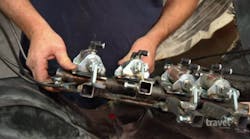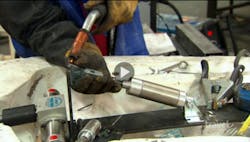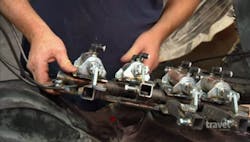Halloween has become big business. Candy and other treats and simple costumes are still a big part of the festivities, but masks and costumes have become more detailed, realistic, and gory. You can even buy animated figures that use motion to bring ghouls, zombies, and monsters to life.
Entry-level animated figures use a few axes of motion using electromechanical drives. But the pros make figures with multiple movements, and in many cases, there just isn't enough room for big and heavy electromechanical drives.
Enter pneumatics, where a compressor can but tucked away out of sight (and earshot), and pneumatic cylinders and rotary actuators generate motion from within cramped quarters.
Here's an example showing the pneumatic innards from a show on the Travel Channel. It shows how components from Bimba Mfg. bring lifelike motion to carefully crafted figures.



